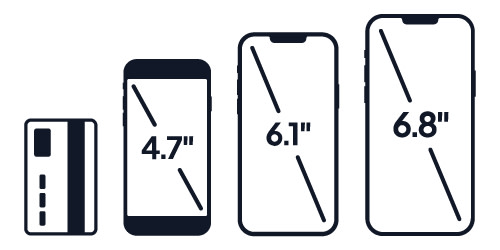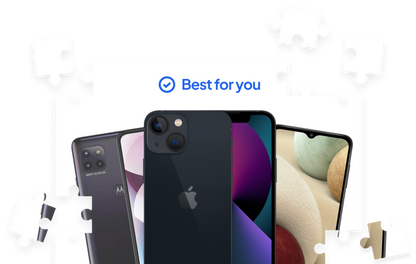In Defense of the Big Cell Phone


Editor's Note: This is part of a series exploring the trade-offs to consider when deciding which cell phone to buy. Additional posts in this series will include: In Defense Of The Small Cell Phone; how to think about cell phone costs; and how phone size impacts battery life. Visit PerfectRec to find the best cell phone for you.
What size cell phone should you buy? That's easy - Bigger is Better!
Your first big phone is admittedly a leap: it will be unlike any phone you’ve had before. It will be bigger.
To embrace a big phone, though, is to embrace a life of ease. Everything is smoother, on a big phone. It is remarkably similar to a small phone, except more pleasant. It is like flicking on the color after a lifetime in black and white.
The defense is not philosophical, but rather practical: big phones, hands down, provide the superior computing experience, and in 2022, what is a phone but a computer in your hand? Typing is easier on a big phone. Photographs look better, for no other reason than that you can see them. Watching video becomes, for the first time, a reasonable proposition. Reading is a pleasure. Big phones just work better. This is not a matter of taste, but of hardware. It is a simple, value-neutral fact: just by being larger, a big phone can do what a smaller one cannot.

The screen provides most of the advantages of a big phone, but the larger form factor allows for some less-obvious perks. One is battery life: while the battery life on the iPhone 13 and 13 Pro are totally adequate for most users, the battery life on the 6.7-inch 13 Pro Max is vastly superior. “It’s ridiculous,” one Verge review recounts. “It just goes and goes, lasting so long I had to actively work to kill the thing in less than a full day by just shooting a bunch of 4K video to drain it.” Big phones can fit bigger batteries; bigger batteries last longer. You can’t fight the laws of physics.
The other traditional advantage is the camera. The iPhone Pro and Pro Max have telephoto lenses. The non-Pro models don’t. “But I don’t need a fancy telephoto lens,” you might be thinking, and perhaps you’re right — the dual-camera system on the 13 and 13 mini is very, very good. But having the 3x optical lens is better. It unlocks a world of possibilities. The telephoto lens is the difference between a picture of your living room (with your dog napping somewhere in it) and a glorious portrait of your napping dog. And there’s no better way to view and edit your photos than on a giant 6.7” screen.
Are there drawbacks? Sure. If you wear tight pants, a large phone might not fit comfortably in your pocket. (This is only an issue if you do keep your phone in your pocket — and many if not most of us do not. Women’s clothes, for example, frequently have no pockets at all!) And it is indisputably true that a large phone is generally a two-handed proposition — one hand to hold the phone, and the other to navigate it. This is occasionally cumbersome. It is also a small price to pay.
There is a reason phones are trending bigger: people like them. Why experience the world through a cramped little screen, when you can have the luxury of space? Why not allow yourself the best possible experience, with the longest battery life, the sharpest photos, the fewest typos? Life is difficult enough already. Give yourself the gift of a big phone.
Other recommended articles

In Defense Of The Small Cell Phone
Stay up to date on new products
Get occasional updates about new product releases, interesting product news, and exciting PerfectRec features. No spam. We never share your email.
